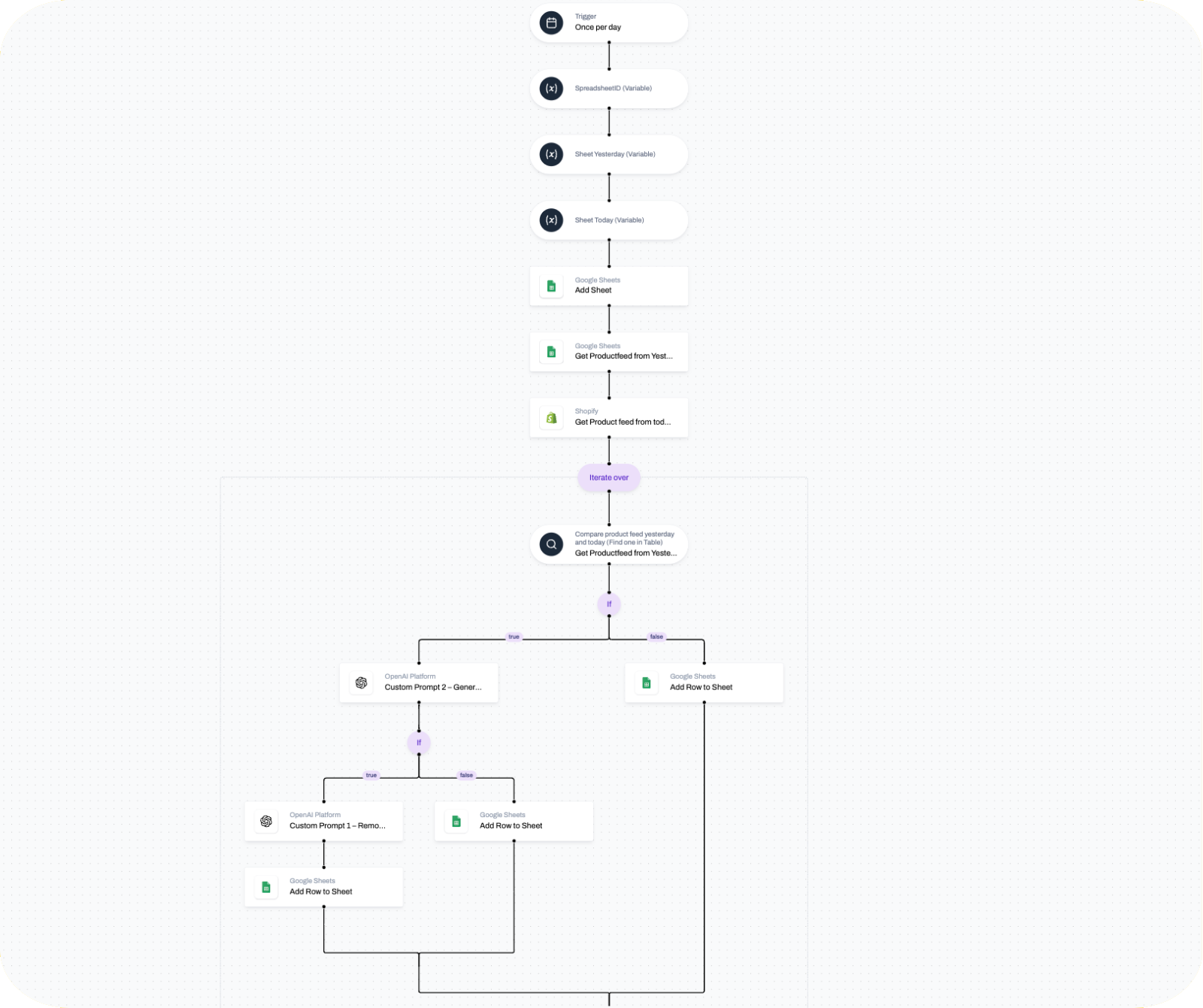ECOMMERCE
Automatic synchronization of product feeds from Shopify and Google Shopping
18.03.2024

For online store owners using Shopify, we have a flow that fully automates the synchronization of your Shopify product feed with your Google Shopping feed. With just a few clicks, your entire product range is transferred from Shopify to Google, including all necessary attributes such as title, price and condition. It doesn't matter whether you manage hundreds or even thousands of products. We'll show you how you can automate this tedious process and save yourself a lot of time.
The Challenge
Meet Anna, a tea connoisseur who has turned her passion into a thriving online store. She offers hundreds of tea varieties - from traditional blends to exotic flavors from all corners of the world. Her mission is to cater to every taste and ensure that every tea drinker finds their perfect cup of tea.
Now that she has a great website and a sizable Shopify product catalog, Anna is ready to scale her online reach. Her first port of call: Google Shopping.
The only challenge, however, is the sheer volume of products in their warehouse. The thought of manually moving every single product from Shopify to the Google Shopping feed seems daunting. And it doesn't help that she's already working beyond her hours to make sure all the workflows and shipping processes run smoothly. But she can't wait any longer - this week she's going to ask around her network. Surely someone out there has cracked the code to speed up this process. After all, there must be a tried and tested method to simplify this task.
The Solution
During their morning coffee conversations at the office, one of Anna's coworkers mentioned Shopstory: a no-code automation platform that automates marketing and ecommerce tasks. Curious to learn more, Anna came across Shopstory's Flow Library, where she found a list of all existing ecommerce automations! It quickly became clear how many hours of work she would save by implementing some of these automations (flows). She was delighted to come across a flow called "Feed Gen Shopify", which synchronizes her Shopify store system with Google Shopping. The flow connects Shopify with Google Shopping and synchronizes the feeds with just a few clicks.
This cross-channel flow in Shopstory is structured as follows:
- Shopify: The flow extracts necessary attributes such as title, price and description from Anna's Shopify feed.
- Google Shopping: All required fields are automatically filled with data, taking into account the standards of Google Shopping - in autopilot mode.

Illustration: An automated flow on Shopstory that synchronizes all your Shopify products with your Google Shopping.
And that was it! Anna was impressed with the seamless synchronization between her Shopify feed and Google Shopping. It saved not just hours, but potentially days of manual work. Motivated by the increased efficiency, Anna has already decided to dive deeper into the Flow Library to realize further potential for automation. In record time, she optimized her Google Ads, automated her reporting and even fine-tuned her product descriptions in Shopify.
Conclusion
In today's highly competitive marketplace, it is necessary to increase the visibility of your products as much as possible. Google Shopping allows Shopify merchants to showcase their products, while Shopstory optimizes the otherwise time-consuming process of transferring essential product information. This allows you to reach a wider audience and increase your reach and chances of conversions. The best part? The time saved can be redirected to more important tasks that require human creativity and decision making!
In the ever-evolving world of ecommerce & marketing, it's crucial to stay ahead and stay ahead of your competition. Take advantage of marketing automation with Shopstory to optimize your advertising campaigns, save time and resources, and get back to focusing on what matters most - the success of your business.
Interested in marketing automation and would like to find out more about our Shopstory software? Then perhaps you'd like to read our white paper “The Future of Automation in Ecommerce & Marketing” or follow the link below to learn more about our software:
More to Explore
Discover more insights from our latest articles
© 2025, Shopstory









